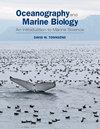Zonation of deep biota on continental margins
1区 生物学
Q1 Agricultural and Biological Sciences
引用次数: 313
Abstract
Pioneering deep-sea surveys established that the fauna of the continental margins is zoned in the sense that individual species and assemblages occupy restricted depth bands. It has been speculated that the causes of this wide-spread pattern might involve cold temperatures, high pressures and limited food availability. Increased sampling over the past two decades has confirmed the global presence of depth zonation. Well-defined zonation in the cold polar oceans and the warm Mediterranean indicate that temperature per se may be of less importance on ecological timescales than originally proposed. Strong alternatives are range restriction by pressure and food availability. Understanding of pressure physiology has advanced greatly, and it is to be expected that all deep organisms possess some form of genetic adaptation for pressure tolerance. Since high pressure and low temperatures affect membrane and enzyme systems similarly, combined piezo-thermal thresholds may limit depth ranges. There is a negative, exponential gradient of food availability caused by the decrease in labile carbon influx to bottom. The TROX model linking carbon influx with interstitial oxygen levels has been successful in explaining deep distributions of benthic Foraminifera and may be more broadly applicable. Current efforts to relate metazoan ranges to food availability are, however, hindered by limited understanding of how organisms recognise and utilise the nutritious content of detritus. Thus, the exact controls of depth zonation remain conjectural. Zonation studies are gaining in importance due to the increasing availability of deep fauna databases and the need to establish regulatory boundaries. Future studies may benefit from a growing body of biogeographic theory, especially the understanding of bounded domains. It is proposed that continental slope fauna may be more effectively studied if viewed as the overlapping of three components: species extending down from the shelf, species extending up from the abyss and species truly restricted to the slope.大陆边缘深层生物群的分带
开创性的深海调查证实,大陆边缘的动物群是有分区的,即单个物种和组合占据有限的深度带。据推测,造成这种广泛传播模式的原因可能与低温、高压和食物供应有限有关。在过去的二十年中,越来越多的采样已经证实了全球深度分带的存在。在寒冷的极地海洋和温暖的地中海中,明确的地带性表明,温度本身在生态时间尺度上的重要性可能不如最初提出的那么大。强大的替代方案是受压力和食物供应的范围限制。对压力生理学的理解已经有了很大的进步,可以预期所有的深层生物都具有某种形式的基因适应压力耐受性。由于高压和低温对膜和酶系统的影响相似,组合的压电热阈值可能会限制深度范围。由于流入底部的不稳定碳减少,粮食供应呈负的指数梯度。将碳流入与间质氧水平联系起来的TROX模型已经成功地解释了底栖有孔虫的深层分布,并且可能更广泛地适用。然而,目前将后生动物范围与食物供应联系起来的努力,由于对生物体如何识别和利用碎屑的营养成分的了解有限而受到阻碍。因此,深度分带的确切控制仍然是推测性的。由于越来越多的深海动物数据库的可用性和建立管理边界的需要,分区研究正变得越来越重要。未来的研究可能会受益于越来越多的生物地理学理论,特别是对边界域的理解。如果将陆坡动物群看作是陆架向下延伸的物种、深渊向上延伸的物种和真正局限于陆坡的物种这三种成分的重叠,则可以更有效地研究陆坡动物群。
本文章由计算机程序翻译,如有差异,请以英文原文为准。
求助全文
约1分钟内获得全文
求助全文
来源期刊
自引率
0.00%
发文量
0
期刊介绍:
With increasing interest in the field and its relevance in global environmental issues, Oceanography and Marine Biology: An Annual Review provides authoritative reviews that summarize results of recent research in basic areas of marine research, exploring topics of special and topical importance while adding to new areas as they arise

 求助内容:
求助内容: 应助结果提醒方式:
应助结果提醒方式:


